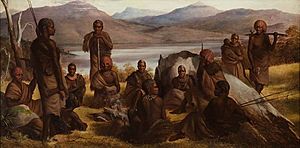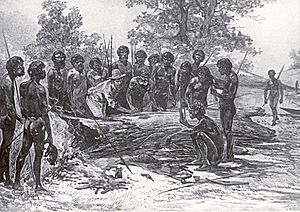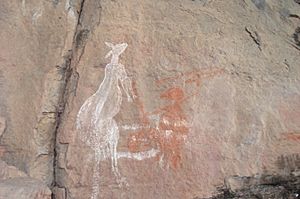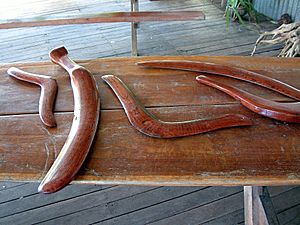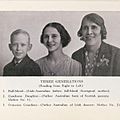Indigenous Australians facts for kids
| Total population | |||||||||||||||||||||||||
|---|---|---|---|---|---|---|---|---|---|---|---|---|---|---|---|---|---|---|---|---|---|---|---|---|---|
| 649,171 (2016) 2.8% of Australia's population (2016) |
|||||||||||||||||||||||||
| Population distribution by state/territory | |||||||||||||||||||||||||
|
|||||||||||||||||||||||||
| Languages | |||||||||||||||||||||||||
| Several hundred Indigenous Australian languages (many extinct or nearly so), Australian English, Australian Aboriginal English, Torres Strait Creole, Kriol | |||||||||||||||||||||||||
| Religion | |||||||||||||||||||||||||
| Christianity 73% Non-religious 24% Traditional Aboriginal religion 1% |
|||||||||||||||||||||||||
| Related ethnic groups | |||||||||||||||||||||||||
| see List of Australian Aboriginal group names | |||||||||||||||||||||||||
Indigenous Australians are the first people who lived in Australia. They include Aboriginal Australians and Torres Strait Islanders. These groups have lived in Australia for a very long time. Scientists believe they arrived around 50,000 years ago.
Indigenous Australians used tools like boomerangs to hunt animals for food. They also gathered plants. When Europeans from Britain arrived in 1788, Indigenous Australians faced many challenges. They lost land and many became sick from new diseases. Indigenous Australians have a rich culture, including their own type of art.
Contents
History of Indigenous Australians
The first people in Australia were nomadic. This means they moved from place to place. They came from southeast Asia. They hunted with spears and boomerangs. They also searched for plants, grubs, and insects. They made everything they needed. This way of life helped protect Australia's environment. The land, plants, and animals are very important to Indigenous people. They tell their history through songs and stories. These are passed down through many generations.

When the British arrived in 1788, they called these people "aboriginals." This word means people who have lived there since the earliest times. The British took land from Indigenous Australians. Many Indigenous people died from diseases or were killed.
Today, about 517,000 Indigenous people live in Australia. Most live in cities. A small number still follow traditional ways of life.
Life Before European Contact
Before Europeans arrived, Indigenous Australians lived as hunter-gatherers. They found food from the land. They moved around to find food as seasons changed. But some groups had permanent homes. They even practiced some forms of farming. For example, some groups harvested native yams. They cleared land to make it easier to grow these plants.
Along the northern coast, people harvested yams. They left part of the yam in the ground so it would grow again. Indigenous peoples also used "slash and burn" methods. This helped make the soil richer for growing plants. They also traded seeds to grow plants in new areas.
Indigenous Australians also had clever ways to catch fish. For example, they built large stone fish traps. These traps herded fish into small areas. They were built at different heights for floods and dry times.
Their technology included weapons and tools. They used boomerangs, spears, and clubs for hunting. They also had stone knives and grinding tools. They made nets, baskets, and bags from plant fibers. These were used for fishing, hunting, and carrying things. Trade networks connected people across the continent. They used canoes for travel.
Shelters varied by region. They included bark tents and stone shelters. Clothing included possum-skin cloaks. Some Aboriginal groups in northern Australia traded with fishermen from Indonesia.
Before 1788, it's thought that between 314,000 and 750,000 Indigenous people lived in Australia. Some experts think the number could have been up to two million. The population was divided into about 250 different nations. Each nation had its own language.
Torres Strait Islanders
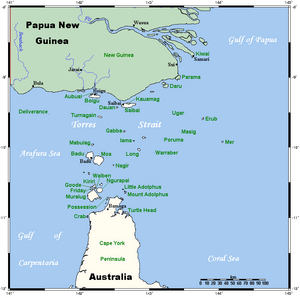
The Torres Strait Islander people have a unique culture. It is different from Aboriginal traditions. Eastern Torres Strait Islanders are related to people from New Guinea. They speak a Papuan language. Because of these differences, they are often seen as a separate group. This is why the term "Indigenous Australians" is used. It includes both Aboriginal and Torres Strait Islander peoples.
About 6% of Indigenous Australians identify as Torres Strait Islanders. Another 4% have both Torres Strait Islander and Aboriginal heritage. The Torres Strait Islands have over 100 islands. They became part of Queensland in 1879. Many Indigenous groups use the phrase "Aboriginal and Torres Strait Islander." This shows the importance of both groups.
Eddie Mabo was a famous Torres Strait Islander. He was from Murray Island. His legal case, the Mabo decision in 1992, was very important. It changed land laws in Australia.
British Colonisation and Its Impact
British settlement in Australia began in 1788. The First Fleet arrived at Botany Bay, New South Wales. New settlements were then made in other parts of Australia. These included Tasmania (1803) and Victoria (1803).
Unlike other places, the British did not make a treaty with Indigenous Australians. A treaty is an agreement between groups. The British thought the land was empty. They called it "Terra nullius," which means "empty land" in Latin.
The arrival of Europeans had a big impact. Many Indigenous Australians died from diseases. These included measles and smallpox. Smallpox killed up to 90% of some groups. Europeans also took land and water resources. This reduced the food available for Indigenous people.
For a long time, Indigenous Australians were controlled by special laws. These laws were called "protection laws." They appointed "Protectors of Aborigines." These Protectors controlled many parts of Indigenous people's lives. This included their jobs and marriages. Indigenous Australians often earned less money than non-Indigenous workers.
Many Indigenous people were forced to work. This happened on farms and in the pearling industry. Sometimes, children as young as 12 were made to work. They often worked in terrible conditions. Most did not receive any wages.
From 1810, many Indigenous people were moved to mission stations. These were run by churches and the government. They provided food and shelter. But their main goal was to make Indigenous people adopt Western ways of life.
Later, in 1937, the government started "assimilation policies." These policies aimed to make Indigenous people who were "not of full blood" join white society. This was an effort to solve the "Aboriginal problem." As part of this, many children were taken from their families. They were placed with white families or in institutions.
The Stolen Generations
The term Stolen Generations refers to Indigenous children. These children were forcibly removed from their families. This happened between about 1871 and 1969. In some places, it continued into the 1970s. Australian government agencies and church missions carried out these removals. The goal was to erase Aboriginal culture.
Modern History and Rights

By 1900, the number of Indigenous Australians had dropped. It reached a low of 74,000 in 1933. But then the population began to grow again. By 1995, numbers were back to pre-colonisation levels. In 2010, there were about 563,000 Indigenous Australians.
For a long time, most Indigenous Australians could not vote. In 1962, a new law gave them the right to vote in national elections. In 1965, university students organized a "Freedom Ride." They traveled by bus to raise awareness. They wanted to show the poor health and living conditions of Indigenous people. They also highlighted unfair treatment.

A very important event was the 1967 referendum. Over 90% of voters said "yes." This allowed the Australian government to make laws for Indigenous people. It also meant Indigenous people would be counted in the national census.
Indigenous Australians began to serve in politics from the 1970s. In sports, Evonne Goolagong Cawley became a world number-one tennis player in 1971. She won 14 Grand Slam titles. Arthur Beetson was the first Indigenous Australian to captain a national sports team in 1973. He led the Australian National Rugby League team. In 2000, Aboriginal sprinter Cathy Freeman lit the Olympic flame at the Sydney Olympics. She then won the 400 meters race.
In 1984, a group of Pintupi people were found living traditionally. They were in the Gibson Desert in Western Australia. They are believed to be the last uncontacted tribe in Australia.
Reconciliation Efforts
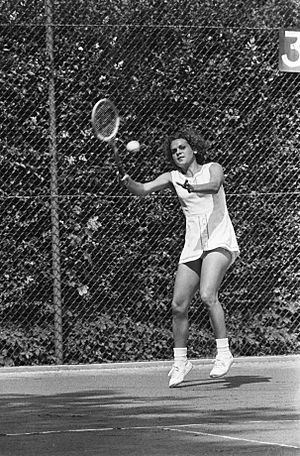
Reconciliation means bringing people together after conflict. It became a big issue in Australian politics. In 1991, the Council for Aboriginal Reconciliation was created. Its goal was to help Indigenous and non-Indigenous Australians come together.
In 1995, an investigation into the Stolen Generations began. The report, called Bringing Them Home, came out in 1997. It estimated that 10% to 33% of all Aboriginal children had been taken from their families.
On 13 February 2008, Prime Minister Kevin Rudd gave a formal apology. He apologized on behalf of the Australian government. This apology was for the suffering caused by the Stolen Generations.
Dreamtime
Indigenous Australians believe in a time called Dreamtime. They believe their animal, plant, and human ancestors created the world. These ancestors made everything in it. There are many songs and stories about Dreamtime. These stories are passed down through generations. Some believe that when someone dies, they get a new life as a plant or another person.
Art
The art of Indigenous Australians is often about Dreamtime. It is made as part of ceremonies. Paintings of people, spirits, and animals cover sacred cliffs and rocks. Some art is made with red and yellow ochre and white clay. Other art is carved into rocks. Many of these artworks are thousands of years old.
Urban Life
Most Indigenous Australians live in cities and towns today. Some have benefited from government education and support. They have careers as teachers, doctors, and lawyers. However, many Indigenous people are still poor. They can feel separated from non-Indigenous society. They may have lost touch with traditional ways. This can make it hard to share in the benefits of modern Australian society.
Boomerangs
Indigenous Australians use different types of boomerangs. One type is the curved returning boomerang. Another is a straight, non-returning boomerang. This straight boomerang is used as a weapon. It is used for fighting and hunting animals like kangaroos.
Land Claims
When British people came to Australia, they thought the land was empty. They believed no one "owned" it. This idea was called "Terra nullius." Under British law, all land belonged to the king. The king could then sell it to others.
In 1976, the Australian government recognized that Indigenous people have rights to their traditional lands. They gained the right to use this land. On 3 June 1992, the High Court of Australia said "Terra nullius" was wrong. The government then created new laws called Native Title. If Indigenous people can show they have always used particular land, and it hasn't been sold or changed by government acts, they can claim it as Indigenous land.
Related pages
Images for kids
-
Aboriginal boys and men in front of a bush shelter, Groote Eylandt, around 1933
-
A painting of a corroboree by 19th century Indigenous activist William Barak
-
Aboriginal cricket team with Tom Wills (coach and captain), Melbourne Cricket Ground, December 1866
-
Cathy Freeman surrounded by media and carrying the Aboriginal and Australian flags after winning the 400 m final at the Sydney Olympics, 2000
See also
 In Spanish: Aborigen australiano para niños
In Spanish: Aborigen australiano para niños


